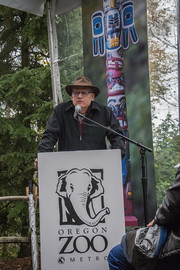 Artist Ray Losey
Artist Ray Losey This is just part of the story Ray told earlier this month when he joined another esteemed family of Northwest totem pole carvers, the Lelooskas, for a rededication ceremony I officiated at the Oregon Zoo.
The Survival Totem Pole Ray and his father gifted to Greenpeace in 1977, it turns out, had suffered a similar fate to the animals it depicts. (The otter, bear, beaver, wolf, and eagle with salmon are all disfigured — a broken wing, a missing eye — to depict the dangers of environmental degradation.) Once the Rainbow Warrior moved on, the Loseys lost track of what had become of the carving. With some sleuthing, Ray discovered it had been donated to the Zoo where it had been run over by a maintenance vehicle, the eagle's wings lost. Eventually installed, it was obscured behind vegetation.
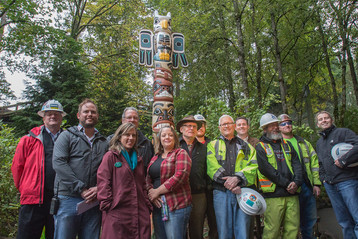 Ray Losey & the Zoo bond construction team
Ray Losey & the Zoo bond construction team The tremendous care and skill of the construction crew who installed the poles, noted by Ray in his remarks, offered a redemptive chapter in the carving's history and underscored the call to stewardship that is embedded in the meaning of the totem poles.
The Centennial Totem Pole
The story of the Centennial Pole spans three centuries, two hemispheres, and at least three generations. We stand here in the second decade of the 21st Century before a towering piece of native Western Red cedar, carved in the 20th Century on the grounds of the 1959 Centennial Exposition that commemorated Oregon gaining statehood in the 19th Century. It extols the virtues of an expedition of Oregon airmen who traveled from the 45th parallel to participate in Operation Deep Freeze, which established a scientific station at the geographic South Pole in the late 1950s. |
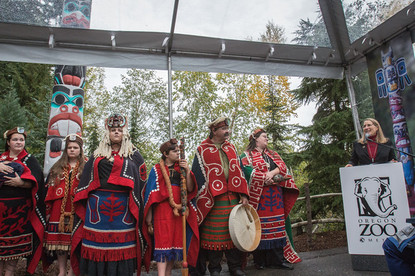
The restoration of the Centennial Pole was led by Chief Lelooska’s brother, Chief Tsungani, and niece, Lottie Stoll-Smith. Three generations of family members participated. Chief Tsungani’s daughter, Mariah Stoll-Smith Reese, director of the Lelooska Foundation, told The Columbian about the connection she felt to her uncle during the restoration: “It’s like he’s teaching you, in a way, being able to be that close to the work. That’s why I wanted to make sure my kids were part of the process.”
During the ceremony we offered the nearly 100 guests a bookmark depicting the two works of art. It is customary in Native American celebrations to offer a giveaway, a token of gratitude to all who participate that binds us together in common witness. As the baskets of bookmarks circulated, I offered these words: "The totem poles we honor today each tell a rich story. The story of the mighty totems they depict. The story of Oregonians triumphantly traveling to the South Pole, and of Northwest animals struggling to survive a changing environment. The story of the people who carved and restored them. The story of the times in which they were first commissioned, and of the changing landscapes in which they are installed. With your presence here today, you become keepers of these stories. We invite you to use this bookmark to share the stories with others."
Photos by Kathy Street, used with permission of the Oregon Zoo. Please visit the Lelooska Foundation and Ray Losey's web site for more information on their work. To read about the ceremony I led earlier this year for the Zoo, to reinter remains discovered during construction, click here.


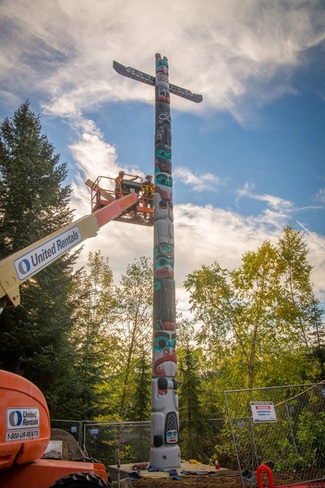
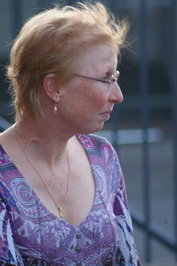

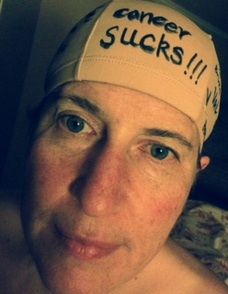
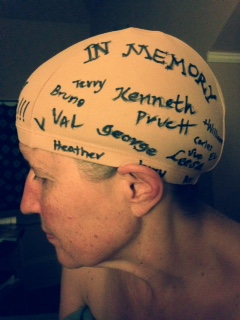
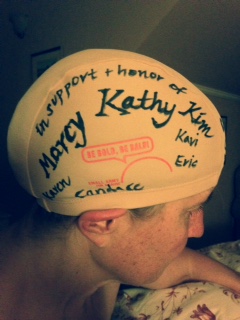

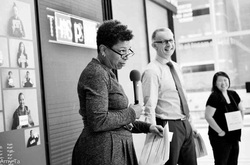


 RSS Feed
RSS Feed